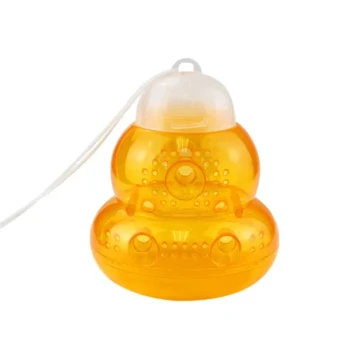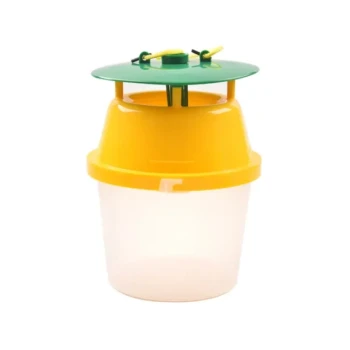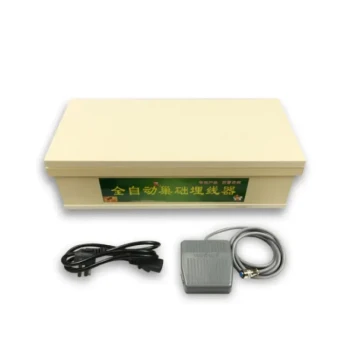Recognizing a severe small hive beetle (SHB) infestation is a critical skill for colony survival. The most definitive signs are fermented, discolored, and "slimy" honeycomb; a sickly sweet odor similar to decaying oranges; and the visible presence of beetle larvae crawling in masses through the comb. These symptoms are not early warnings; they indicate the hive's internal defenses have already been breached and the colony is in immediate danger.
The presence of SHB larvae and fermenting honey signifies a critical failure point in hive health. It means the colony is no longer strong enough to police its own territory, putting it at high risk of a complete collapse, often referred to as a "slime out."
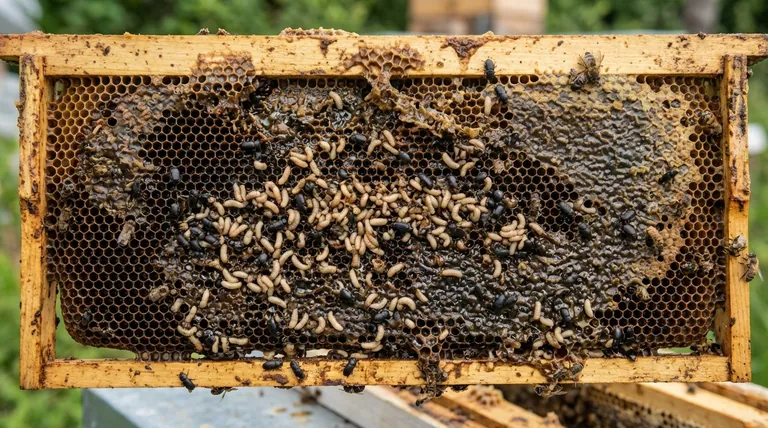
From Nuisance to Overwhelming Threat
Understanding the progression from a few beetles to a full-blown infestation is key to effective management. The adult beetles themselves are not the primary source of destruction.
The Initial Presence: Adult Beetles
It is common to find a few adult small hive beetles in almost any hive. Strong, populous colonies can typically manage this low-level presence effectively. Worker bees will chase the beetles, trap them in crevices or propolis "jails," and prevent them from successfully laying eggs. Seeing a few adults running on the inner cover or top bars is a call for vigilance, not panic.
The Turning Point: Larval Outbreak
The situation becomes severe when adult beetles successfully lay large clutches of eggs that the bees cannot remove. When these eggs hatch, the resulting larvae are the true agents of destruction. These maggots tunnel through honeycomb, consuming honey, pollen, and even bee brood.
The "Slime Out": Fermentation and Collapse
The feces of the larvae contain a specific yeast (Kodamaea ohmeri) that contaminates the honey, causing it to ferment and bubble out of the cells. This creates the characteristic slimy mess that gives the phenomenon its name. This slime is repellent to bees and will cause them to abandon the hive entirely, leaving behind a foul-smelling, worthless wreck. The distinct odor of decaying oranges is a tell-tale sign of this fermentation process.
Understanding the Root Causes
A severe SHB infestation is almost always a symptom of an underlying problem within the colony. Beetles exploit weakness.
Colony Strength is the Ultimate Defense
A large and healthy bee population is the single most important defense against SHB. A strong colony has enough workers to patrol every corner of the hive, remove beetle eggs before they hatch, and imprison adult beetles. Weak or dwindling colonies lack the workforce to perform this essential policing.
Excess Space and Unprotected Resources
Small hive beetles thrive in areas of the hive that are not adequately patrolled by bees. Providing a colony with too much space, such as adding supers too early, gives beetles undefended territory to lay eggs. Frames of honey or pollen that are not fully covered by bees are prime targets.
Apiary Hygiene and Prompt Extraction
Leaving stored honey combs or unrendered wax cappings exposed in or near the apiary can attract and breed enormous numbers of beetles. It is critical to extract honey supers promptly after removal and to process or freeze any beeswax cappings or pollen patties that are not in immediate use.
Common Pitfalls to Avoid
Even with the right knowledge, beekeepers can make critical mistakes in their approach to SHB management.
Focusing Only on Traps
In-hive traps can be effective at reducing the population of adult beetles, but they are not a solution on their own. Relying solely on traps while ignoring the root cause of a weak or stressed colony will ultimately fail. Traps are a tool, not a cure.
Over-Inspection and Hive Stress
While regular inspections are necessary for early detection, frequent and disruptive hive checks can increase colony stress. A stressed colony is less capable of defending itself. Your goal should be to perform inspections efficiently and with purpose, minimizing the time the hive is open.
Ignoring Other Stressors
A colony's vulnerability to SHB is directly linked to its overall health. A hive struggling with a high varroa mite load, poor nutrition, or queen issues will not have the resources to fend off beetles. Effective SHB management requires holistic hive management.
Making the Right Choice for Your Goal
Your response to small hive beetles should be tailored to the situation you are observing in your apiary.
- If your primary focus is prevention: Maintain strong, populous colonies and avoid giving them more space than they can patrol and defend.
- If you are seeing a few adult beetles: Use in-hive traps to reduce the adult population, but concentrate your main effort on ensuring the colony remains strong and stress-free.
- If you have found signs of a severe infestation (larvae and slime): Act immediately by removing all slimed frames and, if the colony is salvageable, reducing its internal space to a size the remaining bees can realistically defend.
Proactive hive management is the definitive defense against the destructive potential of the small hive beetle.
Summary Table:
| Sign of Severe Infestation | What It Means for Your Hive |
|---|---|
| Slimy, Fermenting Honeycomb | Honey is spoiled; bees are repelled and will abandon the hive. |
| Odor of Decaying Oranges | Indicates yeast fermentation from larval feces, a sign of advanced decay. |
| Masses of Larvae in Comb | Beetle reproduction is unchecked; larvae are actively destroying comb and brood. |
| Adult Beetles Not Being Chased | Colony is too weak to defend itself; a critical failure of hive health. |
Don't let small hive beetles destroy your apiary's productivity. A severe infestation is a sign of underlying colony stress that requires immediate, expert management. HONESTBEE supplies commercial apiaries and beekeeping equipment distributors with the durable, effective tools needed for proactive hive defense. From beetle traps to essential equipment, our wholesale-focused operations ensure you get the reliable supplies to maintain strong, healthy colonies.
Protect your investment and secure your honey yield. Contact our team today for expert advice and wholesale pricing on beekeeping supplies designed for commercial success.
Visual Guide
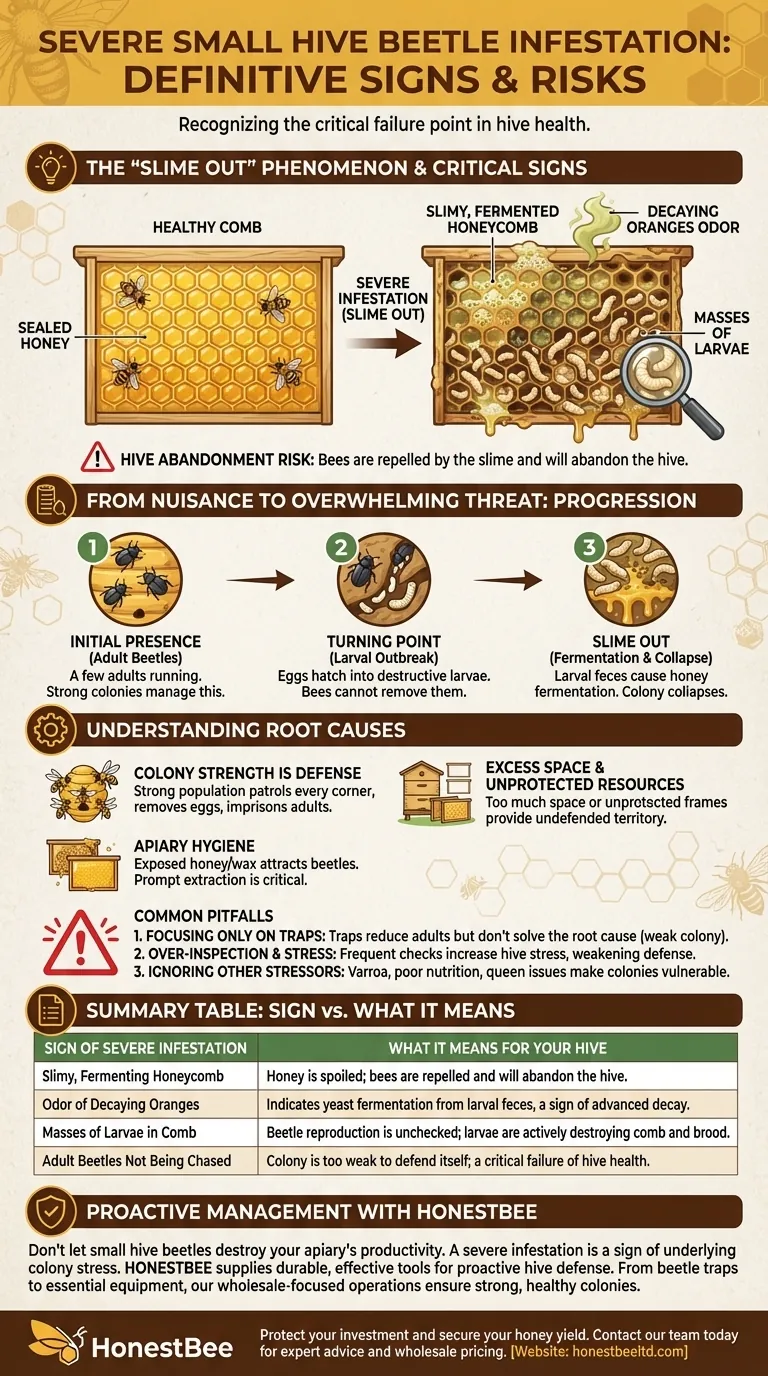
Related Products
- Reusable Clear Small Hive Beetle Traps for Beehives Beetle Trapping Tools
- Black Plastic Beetle Barn Hive Beetle Trap for Beehives
- Removable Washable Hive Beetle Trap Attractants for Small Hive Beetles
- Plastic Beetle Blaster Trap Beekeeping Tools and Supplies
- Gourd Shaped Hanging Wasp Trap Professional Wasp Catcher
People Also Ask
- What are small hive beetles and where are they not indigenous? Protect Your Apiary from This Invasive Pest
- How should filled beetle traps be handled? Safely Remove and Dispose to Protect Your Hive
- What are the steps for installing hive beetle traps? A Guide to Effective Beetle Control
- How do Beetle Blasters trap adult beetles? A Simple, Non-Chemical Pest Control Solution
- What is the recommended number of beetle traps per hive? Optimize Your Hive's Beetle Defense




